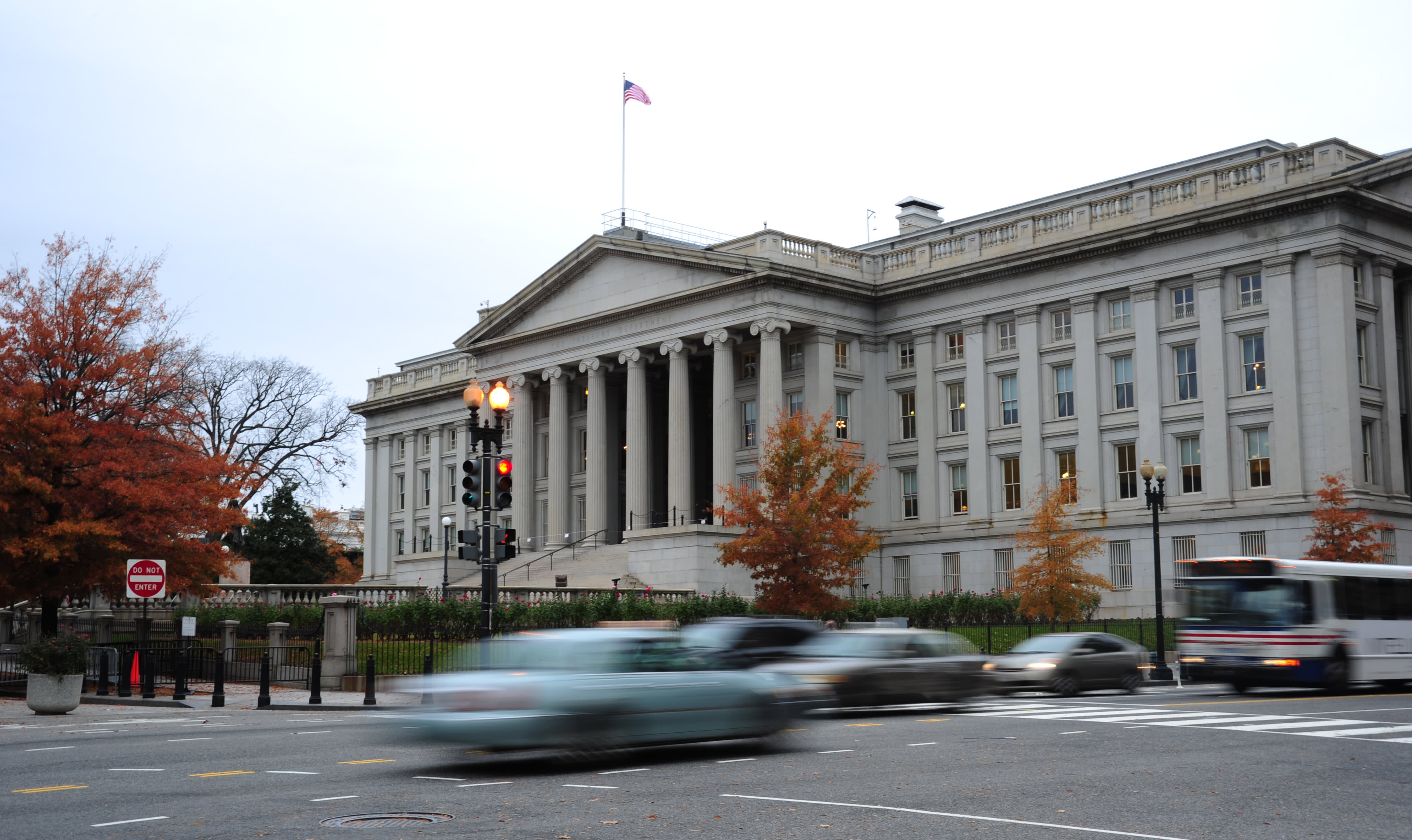
Vehicles drive by the US Treasury Building in Washington, DC on November 15, 2011.
Karen Bleier | AFP | Getty Images
U.S. authorities are spending so much that European debt will become more appealing to investors, an economist told CNBC Monday.
U.S. bonds — debt issued by the U.S. Treasury to fund government activities — are traditionally perceived as a safe asset. This means that those who buy U.S. government bonds will have stable returns in the future — even if these are not very high — and investors trust the U.S. government will pay that debt back.
However, that could change once the coronavirus pandemic is over.
“Debt in the U.S., public debt, is surging much, much more than what we see anywhere in Europe, so the comparison between buying a European bond or a U.S. bond will actually look more favorable in the future,” Holger Schmieding, chief economist at Berenberg, told CNBC’s Squawk Box Europe.
The U.S. Congressional Budget Office said in September that public debt is set to “rise sharply to 98% of GDP in 2020, compared to 79% at the end of 2019.”
The expectation is that U.S. debt will be above 100% in 2021 and reach 109% of GDP by 2030.
Higher public debt levels could make U.S. bonds less attractive to investors given that there is an increased risk that the government could, at some point, struggle to repay some of it. Hence, investors looking for relatively risk-free assets could, in theory, turn their backs on U.S. bonds.
At least for the foreseeable future, make it the next three, four years, there’s very little risk of a debt crisis in Europe.
Holger Schmieding
chief economist at Berenberg
European countries are also spending more to deal with the economic shock from Covid-19. In fact, the European Central Bank warned in May that growing public debt in highly indebted European nations, such as Greece and Italy, could reignite market concerns.
However, since then, the 27 EU nations have come together to approve common borrowing via the European Commission, the executive arm of the EU. This plan has boosted market confidence that the region might weather the economic shock better than initially expected and could therefore support the appetite for European bonds.
“On top of that, we do have the European Central Bank which is holding basically much of the increase in debt and which for a long time will not be selling any of that so at least for the foreseeable future, make it the next three, four years, there’s very little risk of a debt crisis in Europe as long as Italy does not do anything politically very far,” Schmieding told CNBC.
He is of the opinion that Italy is the riskiest nation in the EU although Greece has the highest public debt pile across the EU bloc. This is because the coalition government in Rome is seen as relatively fragile and its collapse could easily trigger snap elections.




